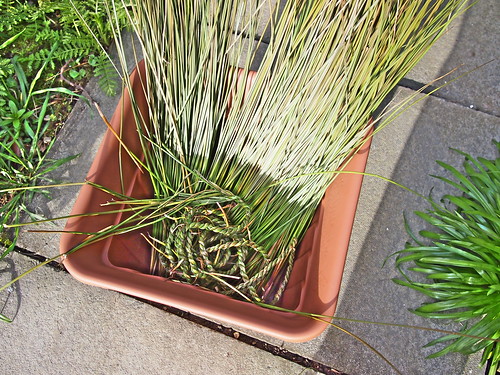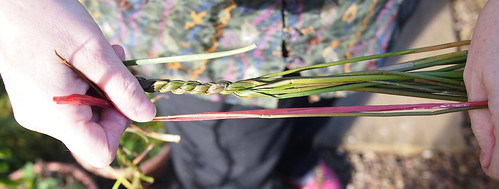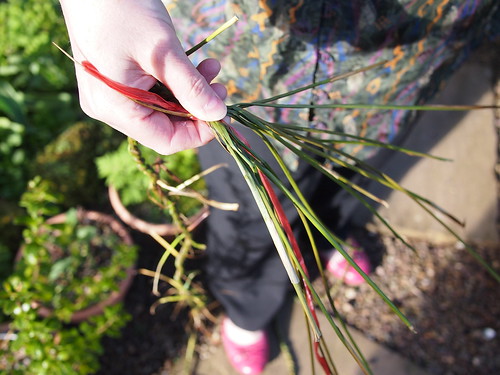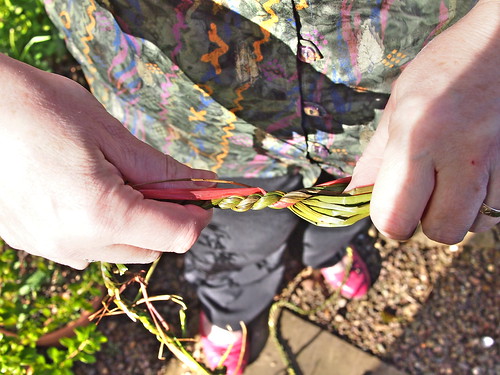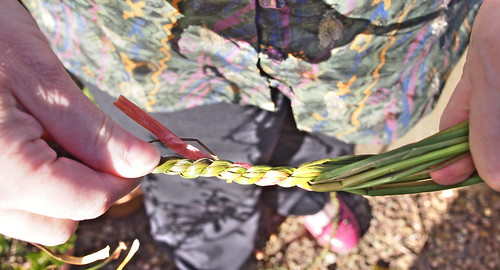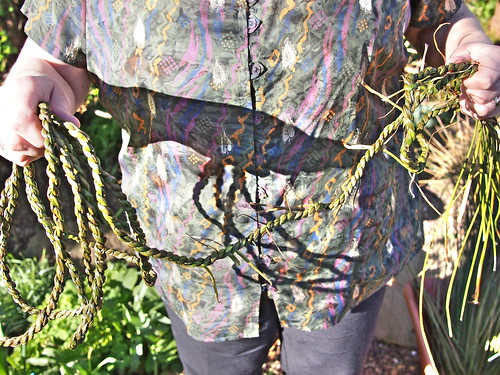Juncus effuses, the soft rush, the little field rush, the common clump that you see on damp untilled fields and waste ground.

This is the rush plant that I pulled three weeks ago. It's growing in the snarled tangle of the overwintered pond in the back garden. I generally don't tidy too much so that there's cover and habitat for everything that visits the pond during the hardest time of year, but start tidying up in early spring. The rushes were the first to go
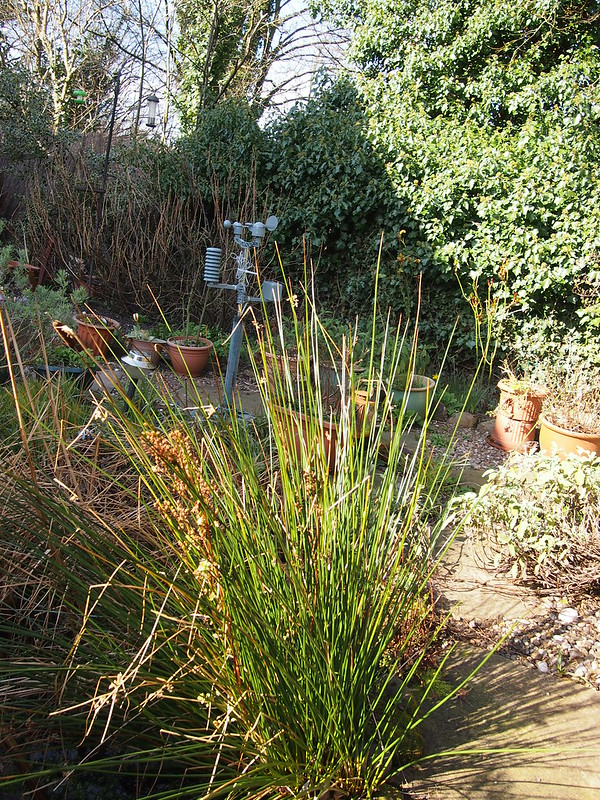
It's a surprisingly useful plant.
TomBear makes rush lights from it, but it's also used to make rope. It's good rope too, and the 'waxy' outer coating of the rushes helps to shed rain.
Traditionally the ropes were used to make everything from beeskeps to kishies.
Kishies are the carrying baskets that were once common right across the land. One strap around the shoulders held them securely on the back. Used for carrying everything and anything, these lightweight but strong baskets were made using what is generally considered waste materials. Oat straw or docken stems for the support and rush rope twinned to hold it all together.
Using docken stems had another advantage since the dried stems don't absorb moisture easily, especially since they too have a protective outer layer, they were used for lightweight baskets for carrying fish. They could be easily washed off after use and left no lingering stink
Now is a good time of year to gather the rushes. They need to be pulled rather than cut, and they need to be stooked, or spread if you have room, and allowed to dry out. The inner polystyrene like core needs to be dried out so that the rope doesn't shrink and loosen after it's made.
I read that these rushes will grow up to 1.5m tall I've never found any quite that size that are useable to the tips, but my long ones usually work out at most a metre long. Shorter is fine, they just need joined in a little more frequently.
I've never found any quite that size that are useable to the tips, but my long ones usually work out at most a metre long. Shorter is fine, they just need joined in a little more frequently.
This is the bundle of the ones I'm keeping to dry out from the clump beside the pond.

I'll take photos of the rope as I make it, explain how it's done, since I promised to show how I join in extra lengths as it grows.
This is a heads up....find some rushes, get them drying
atb,
Mary

This is the rush plant that I pulled three weeks ago. It's growing in the snarled tangle of the overwintered pond in the back garden. I generally don't tidy too much so that there's cover and habitat for everything that visits the pond during the hardest time of year, but start tidying up in early spring. The rushes were the first to go

It's a surprisingly useful plant.
TomBear makes rush lights from it, but it's also used to make rope. It's good rope too, and the 'waxy' outer coating of the rushes helps to shed rain.
Traditionally the ropes were used to make everything from beeskeps to kishies.
Kishies are the carrying baskets that were once common right across the land. One strap around the shoulders held them securely on the back. Used for carrying everything and anything, these lightweight but strong baskets were made using what is generally considered waste materials. Oat straw or docken stems for the support and rush rope twinned to hold it all together.
Using docken stems had another advantage since the dried stems don't absorb moisture easily, especially since they too have a protective outer layer, they were used for lightweight baskets for carrying fish. They could be easily washed off after use and left no lingering stink
Now is a good time of year to gather the rushes. They need to be pulled rather than cut, and they need to be stooked, or spread if you have room, and allowed to dry out. The inner polystyrene like core needs to be dried out so that the rope doesn't shrink and loosen after it's made.
I read that these rushes will grow up to 1.5m tall
 I've never found any quite that size that are useable to the tips, but my long ones usually work out at most a metre long. Shorter is fine, they just need joined in a little more frequently.
I've never found any quite that size that are useable to the tips, but my long ones usually work out at most a metre long. Shorter is fine, they just need joined in a little more frequently.This is the bundle of the ones I'm keeping to dry out from the clump beside the pond.

I'll take photos of the rope as I make it, explain how it's done, since I promised to show how I join in extra lengths as it grows.
This is a heads up....find some rushes, get them drying
atb,
Mary
Last edited:



